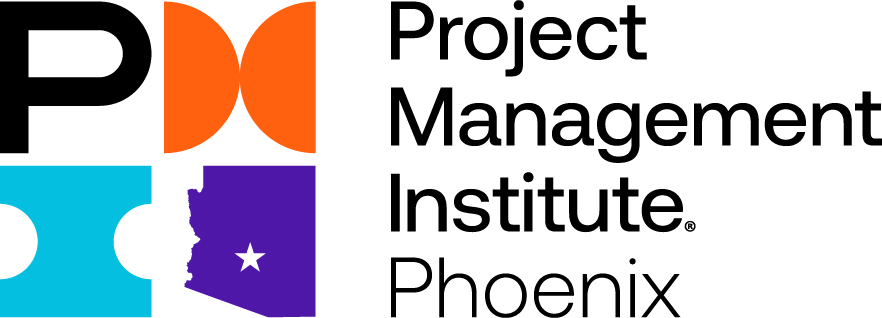Headings in this article:
- Personal Reflection on the Triple Constraint
- Introduction to the Triple Constraint
- Understanding the Elements of the Triple Constraint: Cost, Scope, Time
- The Interrelationship Between Cost, Scope, and Time
- Strategies for Balancing the Triple Constraint
- Common Challenges in Managing the Triple Constraint
- Tools and Techniques for Effective Triple Constraint Management
- Conclusion: The Importance of Acknowledging the Triple Constraint in Project Success
Personal Reflection on the Triple Constraint
Reflecting on the Triple Constraint in project management—cost, scope, and time, I realized how intertwined these elements were in the success of any project I undertook. Each project I managed presented a unique set of challenges, making it crucial for me to find a delicate balance among these constraints. I often started with the project scope, defining what I wanted to achieve and the deliverables expected. However, it was rarely as straightforward as it seemed. As the project evolved, changes in scope often arose due to new requirements or stakeholder feedback, which directly impacted my project timeline and budget. This intricate dance between these factors taught me the importance of maintaining flexibility while setting clear boundaries.
Managing these constraints required constant communication and negotiation. I learned that transparency with my team and stakeholders about how changes affected cost and time was essential. For instance, if I decided to expand the project's scope, I had to be prepared to allocate more resources or extend the timeline. This situation emphasized that project management was not just about ticking off tasks but about making informed decisions considering the interconnectedness of cost, scope, and time. Through my experiences, I came to appreciate the importance of being proactive rather than reactive, allowing me to navigate challenges and ensure successful project outcomes confidently.
Introduction to the Triple Constraint
The Triple Constraint, or the Project Management Triangle, is a fundamental project management concept emphasizing the interrelated nature of cost, scope, and time. Each corner of the triangle represents one of these elements, and the relationships among them determine a project's overall quality and success. If one constraint changes, it invariably affects the others. For instance, expanding a project scope to include additional features can lead to increased costs and longer timelines. Conversely, if the budget is cut, the project may need to reduce its scope or extend deadlines. Understanding this dynamic is crucial for project managers as they strive to meet stakeholder expectations while navigating the complexities of project delivery.
Effective management of the Triple Constraint involves continuous assessment and communication among team members and stakeholders. As a project evolves, changes are often inevitable, necessitating a reassessment of each element to maintain balance. Project managers employ various tools and techniques, such as stakeholder analysis and risk management, to mitigate the impact of these changes. By recognizing the interplay between cost, scope, and time, project managers can make informed decisions that enhance project sustainability and success. Mastery of the Triple Constraint allows project managers to deliver projects that meet or exceed stakeholder expectations while adhering to budgetary and timeline constraints.
Understanding the Elements of the Triple Constraint: Cost, Scope, Time
Understanding the elements of the Triple Constraint—cost, scope, and time is essential for successful project management, as each component plays a crucial role in shaping the project's overall outcome. Cost is often regarded as the backbone of project planning, encompassing all financial resources required to execute the project. This includes labor, materials, equipment, and additional costs like contingencies for risks that may arise. Effective cost management involves creating a detailed budget, monitoring expenditures, and making adjustments as necessary to keep the project financially feasible. A well-managed budget shrinks the chances of overruns, which can derail project goals and undermine stakeholder confidence.
Scope defines the boundaries of a project, specifying what work must be completed to deliver the desired outcomes. This element details the project's objectives and outlines the deliverables, tasks, and functionalities that must be included. An accurately defined scope is vital for guiding the project team and ensuring alignment with stakeholder expectations. However, scope management can be challenging, as project objectives may evolve due to stakeholder feedback or unforeseen developments. Implementing change control processes helps manage scope changes effectively while assessing their impacts on cost and time, ensuring that any adjustments maintain the project's integrity and overall vision.
Time is the element that dictates the project's timeline, specifying when tasks, milestones, and deliverables must be completed. Effective time management includes planning, scheduling, and prioritizing activities to meet project deadlines. A well-structured timeline helps project managers allocate resources efficiently and identify potential bottlenecks early on. When changes in scope occur, they often necessitate a reevaluation of time commitments, leading to shifts in project schedules. Balancing time with cost and scope requires ongoing communication and collaboration among the project team and stakeholders, ensuring that everyone understands the implications of changes and is aligned on the project’s goals. Ultimately, successfully integrating these three elements is critical to delivering high-quality projects that meet stakeholder needs and adhere to budgetary and timing constraints.
The Interrelationship Between Cost, Scope, and Time
The interrelationship between cost, scope, and time is a foundational principle in project management, often called the Triple Constraint. These three elements are intricately connected, and a change in one can significantly impact the others. For instance, if the scope of a project expands to include additional features or deliverables, there will likely be an increase in costs due to the need for more resources, labor, or extended timelines to complete the additional work. This reinforces the idea that clear project objectives and a well-defined scope are crucial for managing cost and time effectively.
Conversely, if project costs are reduced, perhaps due to budget cuts or resource limitations, the scope may need to be scaled back to accommodate the new financial constraints, or the timeline may need to be extended. This delicate balance requires ongoing communication and negotiation among stakeholders to ensure everyone understands the implications of such changes. Identifying and managing this interrelationship enables project managers to make informed decisions that align with project goals while minimizing risks associated with budget overruns and missed deadlines.
Ultimately, recognizing the interconnected nature of cost, scope, and time allows project managers to adopt a holistic approach to planning and execution. By regularly assessing how changes in one area affect others, project managers can create strategies to mitigate negative impacts and maintain project alignment with stakeholder expectations. This comprehensive understanding fosters better resource allocation, enhances scheduling accuracy, and supports the project's overall success.
Strategies for Balancing the Triple Constraint
Here are several strategies for balancing the Triple Constraint of cost, scope, and time in project management:
1. Clearly Define Project Goals and Scope: Establish a well-defined project scope at the onset to guide activities and set realistic expectations. Use tools like work breakdown structures (WBS) to outline project deliverables.
2. Implement Change Management Processes: Develop structured processes for managing scope, budget, or timeline changes. Assess the impact of any proposed changes and ensure stakeholder involvement in decision-making.
3. Establish a Realistic Budget and Timeline: Create accurate budgets and timelines based on thorough planning and resource estimation. Consider potential risks and include contingencies to accommodate unexpected issues.
4. Foster Open Communication and Collaboration: Encourage regular communication among team members and stakeholders to share insights and concerns. Utilize project management tools for real-time updates and transparency.
5. Utilize Agile Methodologies: Adopt agile project management practices for flexibility in scope and iterative progress. This approach enables teams to respond quickly to changes while focusing on project goals.
6. Conduct Regular Progress Reviews: Conduct frequent project progress evaluations against scope, budget, and schedule. Use these reviews to identify potential deviations and make necessary adjustments promptly.
7. Prioritize Tasks and Resources: Implement prioritization strategies to focus on critical tasks first. Allocate resources effectively to ensure that essential components of the project are completed on time and within budget.
8. Engage Stakeholders Early and Often: Involve stakeholders in the planning and monitoring to ensure alignment and manage expectations. Regularly communicate project status, challenges, and successes.
9. Emphasize Risk Management: Proactively identify potential risks and develop mitigation strategies to minimize their cost, scope, and time impact. Regularly reassess risks throughout the project lifecycle.
10. Promote Team Accountability: Encourage accountability among team members for their roles and responsibilities. Ownership of tasks fosters commitment and enhances overall project performance.
Common Challenges in Managing the Triple Constraint
Managing the Triple Constraint—cost, scope, and time presents several common challenges project managers must navigate to achieve successful project outcomes. Here’s a list of these challenges:
1. Scope Creep: Uncontrolled changes or additions to project scope can lead to increased costs and extended timelines, making it difficult to meet original project goals.
2. Budget Overruns: Unexpected expenses, lack of accurate budgeting, or inflation can result in costs exceeding initial estimates, straining financial resources.
3. Tight Deadlines: Aggressive timelines can pressure teams, leading to rushed work, decreased quality, and potential compromises on scope.
4. Resource Constraints: Limited availability of critical human or material resources can hinder project progress and affect the scope and schedule.
5. Stakeholder Management: Diverse stakeholder expectations can create conflicting priorities, making it challenging to agree on project scope and timelines.
6. Poor Communication: Inadequate information sharing among team members and stakeholders can lead to misunderstandings, errors, and delays.
7. Inadequate Risk Management: Failing to identify and mitigate risks can result in unforeseen challenges that impact cost, scope, and time.
8. Resistance to Change: Team members or stakeholders may resist changes to the project, complicating efforts to adjust scope, timelines, or budgets.
9. Balancing Competing Priorities: Managing the trade-offs between the three constraints can be challenging, as focusing on one often requires compromises in the others.
10. Lack of Clarity in Objectives: Vague or poorly defined project goals can lead to confusion about deliverables and timelines, resulting in ineffective management of scope, cost, and time.
Tools and Techniques for Effective Triple Constraint Management
Effectively managing the Triple Constraint—cost, scope, and time requires various tools and techniques that facilitate planning, monitoring, and adjusting project parameters throughout its lifecycle. Here are some key tools and techniques that project managers can employ to enhance their management of the Triple Constraint:
1. Project Management Software: Tools such as Microsoft Project, Asana, or Trello help in planning and scheduling tasks, tracking progress, and managing resources. These platforms allow for visual representations of the project timeline, making it easier to identify potential bottlenecks and assess how changes in one constraint may impact the others.
2. Work Breakdown Structure (WBS): This hierarchical decomposition of the project into smaller, manageable components aids in defining the project scope and clarifying deliverables. A WBS ensures that all aspects of the project are accounted for, allowing for better cost estimation and time management.
3. Gantt Charts: These visual tools display the project schedule and the relationship between tasks, providing an overview of timelines and progress. Gantt charts are essential for tracking deadlines and help identify areas where time adjustments may be necessary.
4. Earned Value Management (EVM): This technique integrates scope, schedule, and cost variables to assess project performance. Project managers can forecast future performance by comparing planned progress with actual performance and identifying cost or schedule variances before they become critical issues.
5. Risk Management Tools: Utilizing risk assessment frameworks and tools, such as risk matrices or SWOT analysis, allows project managers to identify potential risks to cost, scope, or time. This proactive approach helps in developing mitigation plans that can minimize negative impacts.
6. Change Control Process: A formal change control process systematically evaluates proposed changes and their potential effects on cost, scope, and time. This technique helps ensure that all stakeholders are informed and aligned when adjustments are necessary.
7. Stakeholder Analysis: Tools for stakeholder mapping and analysis, such as the Power/Interest Grid, help project managers identify and prioritize stakeholder needs and expectations. Understanding stakeholder influence can guide decision-making, ensuring that projects align with their interests.
8. Communication Plans: Establishing a robust communication plan ensures that all team members and stakeholders receive timely updates and have access to essential project information. Effective communication minimizes misunderstandings and fosters collaboration throughout the project.
9. Resource Allocation Tools: Resource histograms or resource leveling techniques allow project managers to optimize resource usage, which is critical for balancing the Triple Constraint. Effective resource management enables teams to stay on schedule and within budget.
10. Agile Methodologies: Adopting agile practices like Scrum or Kanban focuses on iterative development and adaptability. This approach allows project teams to respond quickly to changes in scope or timelines while maintaining project momentum.
Conclusion: The Importance of Acknowledging the Triple Constraint in Project Success
In conclusion, acknowledging the Triple Constraint—cost, scope, and time is essential for the success of any project. These three elements are deeply interconnected; one change invariably impacts the others, influencing the overall project outcome. By recognizing this relationship, project managers are better equipped to make informed decisions that optimize resource allocation, maintain stakeholder satisfaction, and enhance overall project quality. Strategic planning, proactive communication, and effective change management are pivotal in ensuring that projects remain on track amidst the various challenges that may arise.
Furthermore, understanding and managing the Triple Constraint fosters a culture of accountability and collaboration within project teams. Project managers can build a shared understanding of project goals and limitations by involving team members and stakeholders in discussions about the constraints, ultimately aligning efforts toward successful delivery. Emphasizing the importance of the Triple Constraint helps achieve specific project objectives. It contributes to long-term benefits, including improved organizational efficiency and a stronger reputation for delivering high-quality outcomes on time and within budget.
Hashtags:
#TripleConstraint #ProjectManagement #CostScopeTime #ProjectSuccess #ProjectPlanning #TimeManagement #ScopeManagement #CostManagement #ProjectDelivery #PMBestPractices #ProjectLeadership #EffectiveManagement #StakeholderEngagement #ProjectStrategies #AgileManagement


